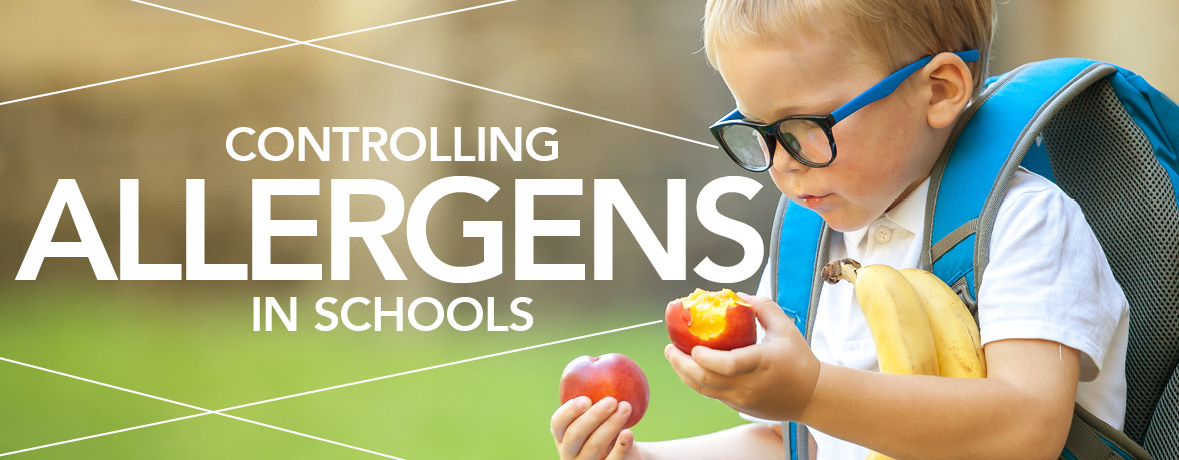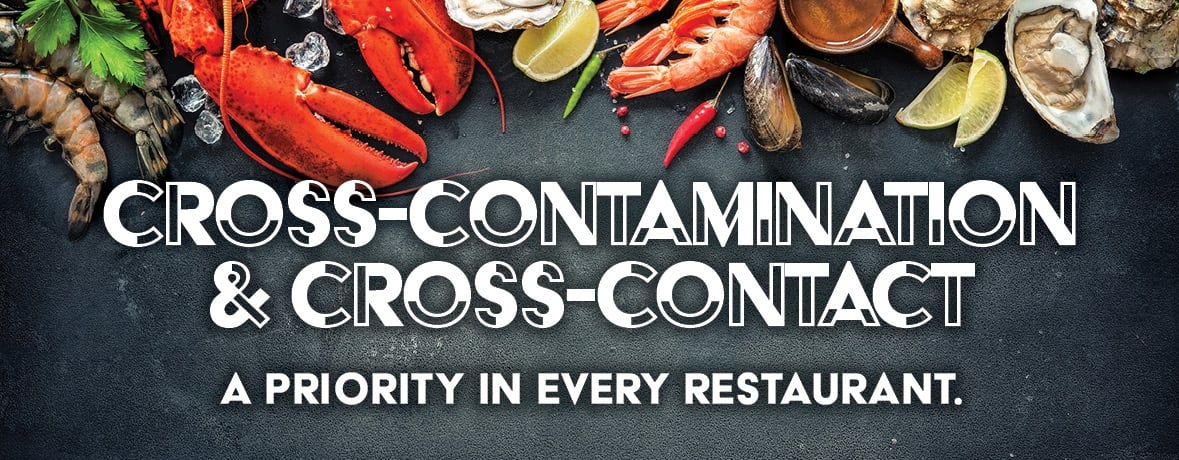
We're Here To Help
Another school year is fast approaching. For many, it has already begun. For food service staff in K-12 schools, this means a new year of providing safe and nutritious meals for millions of children across the country. However, each year this becomes a little more difficult.
Traditionally, it has been up to the parents to meet with teachers and administrators to discuss their child’s food allergies and map out an allergen-free menu and an emergency plan in the event of accidental exposure. However, that all began to change in 2011 when congress passed the FDA Food Service Modernization act, which shifted the focus from reaction to prevention.
With this goal in mind, the Dept. of Health and Human Services in cooperation with the Dept. of Education issued voluntary guidance to encourage K-12 food service providers to be proactive in their efforts to keep the children they serve safe from food allergens that can harm them.
Food Allergy Statistics: Children K-12
According to the CDC (Center for Disease Control), the number of children with food allergies increased 18% from 1997-2007. About 5% of children have been diagnosed with a food allergy. Based on the average class size in public K-12 schools, this means that almost one student in every class has a food allergy.
90% of Allergic Reactions are triggered by Only 8 Foods
Although there are more than 170 different foods that have been known to contain food allergens, 90% of serious reactions are caused by the following 8 foods:
- Milk
- Eggs
- Fish
- Shellfish
- Wheat
- Soy
- Peanuts
- Tree nuts
Learn to Recognize Food Allergy Symptoms in Children
Perhaps the scariest statistic of all is that nearly 25% of children who have had a life-threatening reaction to a food allergen had, up until that point, shown no signs or symptoms of a food allergy. Since they’ve never experienced the symptoms before, in these instances, it is common for children to be confused and not know what is happening to them.
It is critical for administrators, teachers, foodservice managers and personnel to be able to recognize the signs and symptoms of an allergic reaction in children. Look for these warning signs:
- swollen lips, tongue, or eyes
- itchiness, rash, or hives
- nausea, vomiting, or diarrhea
- congestion, hoarse voice, or trouble
- swallowing
- wheezing or difficulty breathing; dizziness
- fainting, or loss of consciousness
- mood change or confusion
An Ounce of Prevention…
It is imperative for K-12 foodservice managers to create safe allergen food prep procedures that will reduce the risk that an allergic child will come in contact with a food allergen that can harm them. At the heart of these preventative measures is a concept called cross contact, not to be confused with cross contamination.
Cross-Contamination
Foods such as raw meats, seafood, and poultry contain harmful bacteria and need to be cooked for safe consumption by people. Cross-contamination occurs when bacteria and other foodborne pathogens come in contact with already cooked or ready-to-eat foods. The most common culprits are knives and utensils, cutting boards, and improper or negligent hand washing.
Thanks to ServSafe, most foodservice providers are aware of cross contamination. However, as the number of children diagnosed with a food allergy continues to rise, cross contact has emerged as an additional safety measure to keep people with food allergies safe.
Cross-Contact
Cross-contact occurs when two foods come in contact with each other and some of the proteins from one rub off on the other. Usually, this isn’t much of an issue as the amount of protein that transfers doesn’t affect the taste or texture of either food.
However, food allergens are a different story. Even a tiny amount of food allergens can trigger a severe allergic reaction in a student with a food allergy. This is why it is critically important to keep foods with known allergens separate from each other and other foods that are served to children.
Carlisle’s Line of Purple Allergen Control Products Help Control Cross-Contact
One of the most effective ways to separate allergen-containing foods is by color coding the containers and lids used to store them. Carlisle makes it easy to avoid cross-contact when preparing foods in the K-12 kitchen with their color-coded line of StorPlus food containers.
StorPlus Purple Food Boxes greatly reduce the risk of cross contact by allowing you to separate foods that contain allergens from those that don’t. Transparent polycarbonate material allows you to keep track of inventory and easily identify what’s inside.
Durable and incredibly versatile, Carlisle’s Comfort Curve Purple Totes are perfect for storing allergen containing food, remote dishwashing, and transporting glass and dishware. The smooth interiors make cleaning a breeze. And the reinforced rims and sturdy comfortable handles allow you to transport heavy foods and dishes without bowing, bending or breaking.
StorPlus Square Food Storage Containers simplify and improve almost every aspect of food and ingredient storage. Transparent walls and molded-in capacity indicators allow you to keep track of inventory at a glance. Wide handles and stacking lugs allow you to stack for storage and easily separate them when needed. They come in sizes from 2 to 22 qt. and have color-coded lids (including purple) to control cross-contact and cross contamination.
Sometimes you need a little more durability, a little more capacity, and a more cost-effective option for disposing of, prepping, or storing large quantities of allergen-containing foods.
Enter Carlisle’s Purple Bronco. Available from 10 to 55 gallons, these round waste bins are made from extra thick durable plastic and have convenient features such as double reinforced drag skids, comfort grip handles, and snap tight lids.
But they’re not just for waste. They are NSF 21 and NSF 2 certified so they’re also safe to use for food prep and storage.
Need allergen-safe portion control? Carlisle has you covered with their Purple Measure Misers. Available in a range of sizes from 1 to 6 oz., these break-resistant, NSF-certified, BPA-free measure misers provide consistency and portion control. These purple misers also have cool features such as a flat bottom for easy spreading of sauces and a notched handle so they won’t slide around in the pan or sink into the contents.
Let’s face it, things get...misplaced…in busy foodservice kitchens. They always seem to turn up eventually though, right? It’s usually not a very big deal. Can’t find your favorite chef’s knife? Just grab another. That’ll work. But with food allergens it’s different. Using the wrong turner, knife, or cutting board can easily cause cross contact and accidentally expose allergic children to food allergens.
San Jamar’s one-of-a-kind Allergen Safe-T Zone System solves this problem.
The Allergen Safe-T Zone system includes a purple Safe-T Grip cutting board, purple tongs, a purple turner, and a 10” purple chef’s knife. A durable purple case protects and stores all the components so your staff won’t lose track of them. When preparing an allergen-safe meal, they’ll have everything they need stored in one convenient place.
With Carlisle’s line of purple allergen control products, foodservice managers have all the tools they need at their disposal to keep their K-12 foodservice environments safe for the ones they care about the most: the children.




